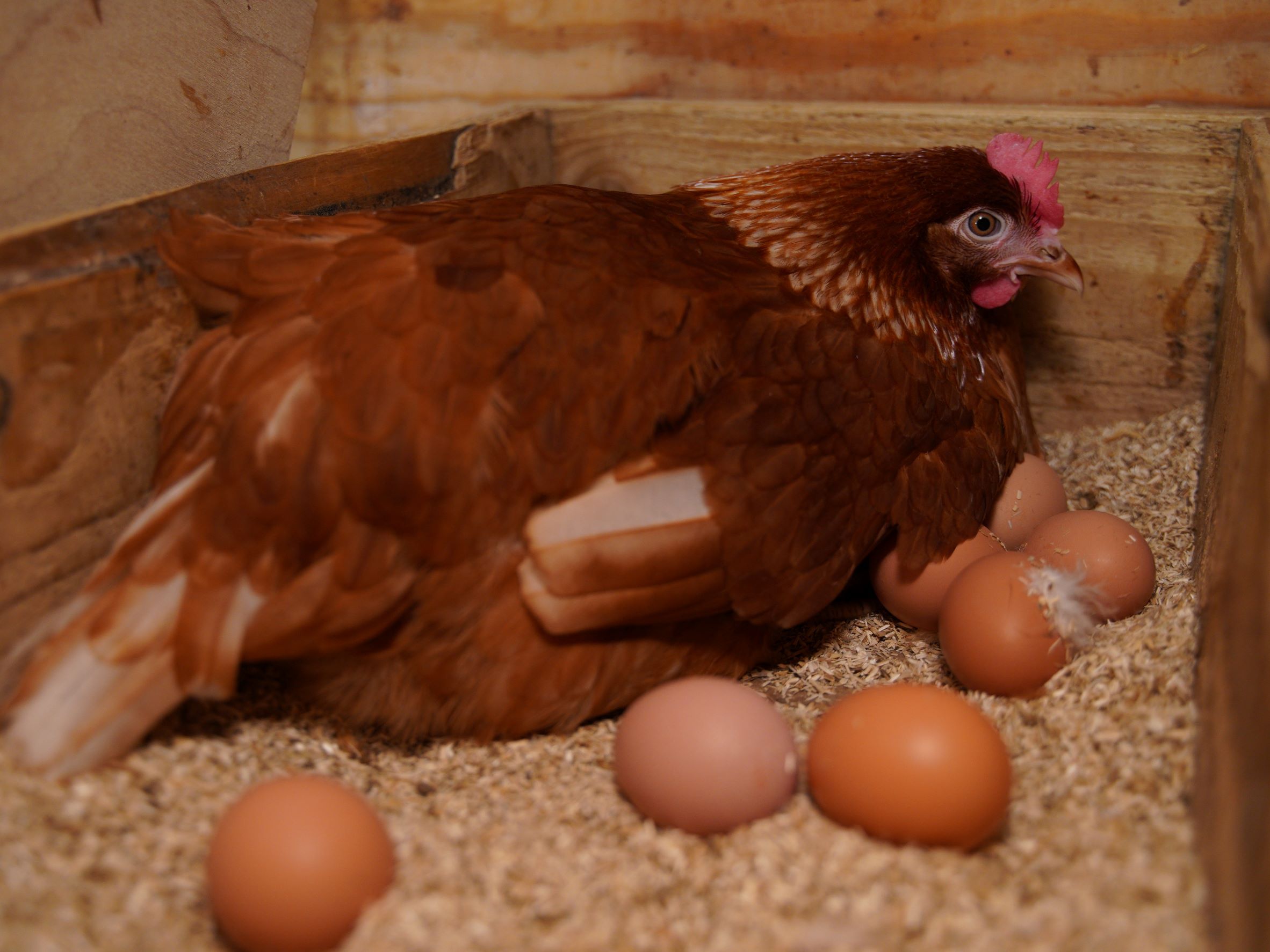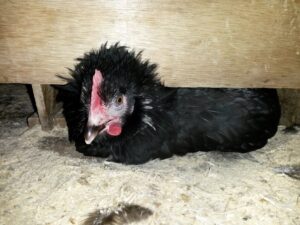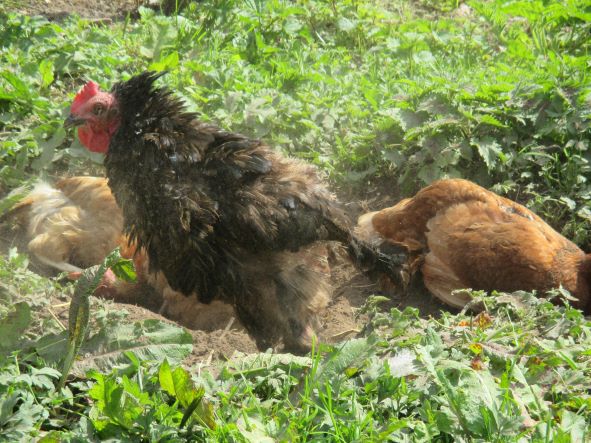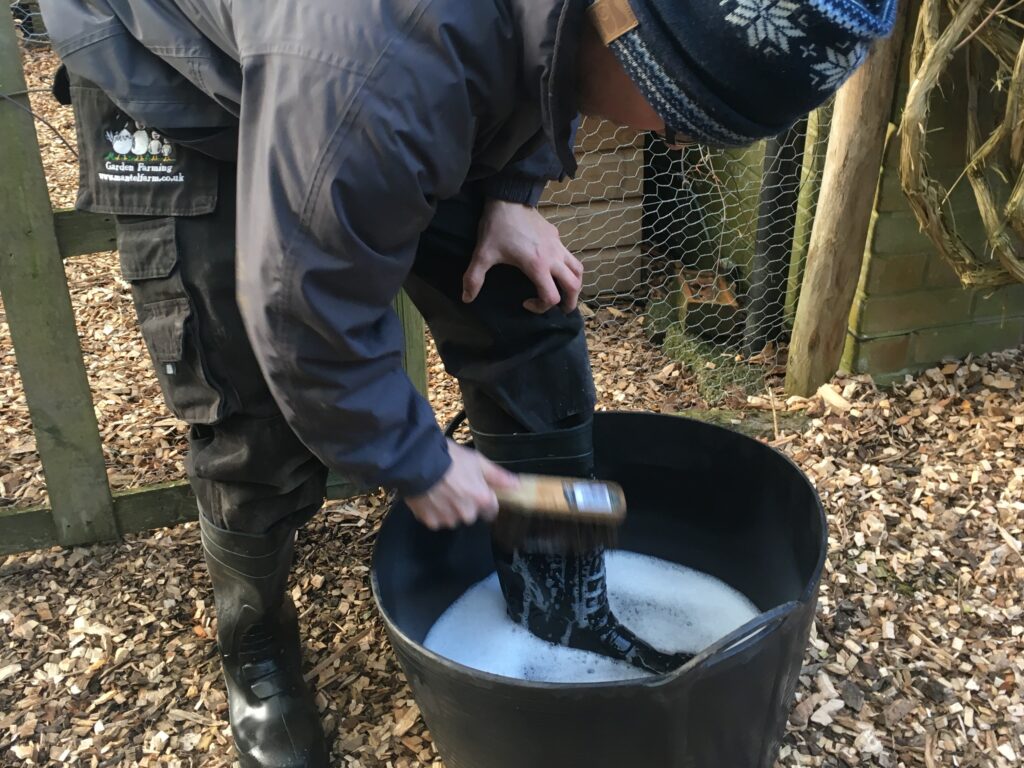
Before we attempt to get to grips with the above, a quick definition of ‘broody’ would be a good idea: basically, this is a female of her species experiencing her natural-born instinct to reproduce, which, in the world of birds involves sitting on eggs with the aim of hatching them, and being mum to a lovely little flock of cute fluffy chicks!
Quick Check List:
- Broodiness will most often occur around spring to summer – March to September.
- If you are looking to have chicks, then one way of doing so is by making use of a broody hen. For this you will need some fertile eggs.
- A broody hen will have almost definitely gone off lay, meaning fewer, or in small flocks, no eggs.
- Clearly mark any eggs to be incubated and collect all other eggs regularly – you don’t want your eggs for eating to be incubated!
- A broody hen will often guard the nest box, collecting others eggs and keeping other hens out.
- Most hens will sit for the 21 day incubation period, some much longer.
- Keep an eye on the hens condition – sitting for an extended period of time in the coup can have adverse impact on their health.
- If you are using a broody to hatch chicks – be prepared for when they hatch, ideally have the broody hen in a separate enclosure.
Broody Hen Help and Advice:
Some say that an unwanted broody hen is like an infectious disease in the coup as it appears to be catching! Definitely no disease, but without a doubt, one intent broody hen can gather support, and often several hens will follow suit and quite often you will end up with several all at once! In our experience this is more common in certain breeds more than others, so don’t panic, not always the case! Indeed, we always expect more broodiness from certain breeds, but that said, this season we have had 3 Leghorns go broody, now they would be on my ‘most unlikely to go broody list!’, so who can call it really! I think really it’s best to just keep and enjoy the chickens that you want to and deal with issues as and when they arise.
No disease, but do spot the symptoms
Broodiness will most often occur around spring to summer – March to September, although we have had broody hens as late as November, and as early as February. Any hen who is spending extended periods of time in the nesting box, or a particularly sheltered corner of the coup or run may be first stage broody. Once they progress to not wanting to come out, returning almost immediately if turned out, squawking (some times aggressively), pecking at any attempt to move them or collect eggs from under them, and often fluffing themselves up to seemingly twice the size (and doing all the above) – they are broody!
So, the answer to the title question really does depend on the situation in hand. If you are in need, or, would like to have some baby chickens ‘chicks’, without having to buy an incubator, then the real thing, the ‘broody hen’ is just the ticket, a friend indeed! However, if chicks are the last thing you are looking for, then a broody hen can sadly be nothing but a nuisance, often causing much disruption to your perfect poultry set up.

Friend…
If you are looking to have chicks, just for the experience of raising from egg to adult, or with the purpose of increasing the size of your flock, then one way of doing so is by making use of a broody hen. For this you will need some fertile eggs. If your flock contains a cockerel with not many more than 10 hens, then the chances are high that the majority of the eggs will be fertile, provided he is active in that department! With larger numbers of hens to cockerel ratio, then the odds of fertility will be reduced for some of the eggs. If you have no cockerel, then you will have to acquire fertile eggs from a trusted source/supplier (such as Mantel Farm!).
If at all possible, set up the broody hen in a space of her own, in view of your other birds, but separate from them, to ensure the chicks will be safe once hatched. If the broody hen ‘sets herself up’ in the nest box in the coup with the other hens, she can be hard to move, and you may have to run with it. (If so, refer to advice at the bottom of this article)
The period of incubation time, (the length of time required for the bird to sit in order for the eggs to hatch,) varies between different breeds of birds. We are dealing here with chickens and bantams, for which this time is 3 weeks. Most precisely, and in the great majority of cases, the time from first sitting to time of hatch will be almost exactly 21 days, give or take a few hours. However, over our many years in poultry, we have experienced chicks hatching up to day 26, this is rare, but can happen. There are various factors that can govern this, and although we won’t go into detail here, just to say this is possible both under a broody hen and in an incubator. When hatching under a broody hen, we always hope that the majority will hatch within the 21 days + or – a few hours, as, in most cases, once the hen has a few chicks to be ‘mothering’, she will often abandon any other unhatched late eggs, being now totally distracted by her new offspring.
Once the chicks are hatched, provided that the brooding area that you have set up has a good supply of water and chick crumb, then the new mother will do all the work for you. We always hatch using broody hens whenever possible as it really is the best start that the new chicks can have. We find it best to feed just chick crumb to around the 8 week point, to mum and chicks. That way there is no risk of the baby birds choking on the adult food, and the higher protein content of the chick crumb helps the mum to recover from all that time spent just sitting on the eggs.
Foe…
An unwanted broody hen, as we’ve already said, can be a pain!, but what can we do about it?
With often one or more broody hens occupying the nesting box, your chicken keeping experience can go rapidly downhill if some action is not taken. The hen(s) that has gone broody will have almost definitely gone off lay, meaning fewer, or in small flocks, no eggs. Where there are other chickens still laying, it is quite common for them to be not allowed in the nest box, effectively thrown out by those that are broody. This can mean that eggs are being laid elsewhere in the coup or run, not what we want. Even if the other hens are allowed to lay in the nest box, their eggs are often dragged in under the broody who will try to hatch everything! As we’ve already mentioned, retrieving these can prove a task – gloves at the ready! If you feel that you can cope with the disruption or indeed get some measures in place to manage the situation, then you might be able to ‘ride it out’, thus avoiding what is really the only other choice, a sort of ‘cruel to be kind’ scenario. Most hens will sit for the 21 day incubation period (give or take a few days), whether they are sitting on non-fertile eggs, dummy eggs (rubber, wooden or china), golf balls or indeed nothing at all – at the end of the period, nothing hatches (briefly sad for them), they (generally) accept it and normal life returns! However, I will have to mention that some very intent hens can sit for another, and very occasionally 2 more periods of 21 days! Oh no!
So, we can attempt being minorly cruel to be kind, sometimes with success, though sometimes, nothing works!
To ‘break’ an unwanted broody hen the aim is to make it as uncomfortable as possible. In most cases for a hen to remain broody it will need to feel snug and cosy, in a sheltered warm darkish place.
The first thing to try is just simply turfing them out of the nest box into the run. With hens who are just ‘half-heartedly’ being broody, 2 or 3 turfing’s will be enough to put them off. With the next stage broody you may have to step up the action by shutting them out for extended periods. This in itself can cause issues, as dependent on time of day, it can prevent the other birds getting into the house/nest box to lay their eggs. So, if a division is possible to still leave access for the other hens then this is preferable. Sometimes even days of this will not break the broody who will still return straight to the box as soon as she can, or just be broody elsewhere in the pen.
Another trick that sometimes works is a complete change of surroundings, so if at all possible a move, if only temporarily to another part of the garden, in a different enclosure if available can work. Even just a complete ‘mix up’ of the existing pen can do the trick. The only trouble is, this can upset the routine of the other hens, so if it works, do set everything back to normal as soon as possible, as they are a bird of routine.
Another route to try is to cool them down, effectively changing the mood. When a hen is broody its underside will produce more heat than usual, that required to incubate eggs if there are any. In addition, she will often pluck her own feathers in that area to allow more heat to make contact with the eggs. Cooling this area down can work towards changing her mood. A swift dunk in some cool water, just a few inches deep, hold for a slow count to 3, repeat several times. Even if the cooling effect doesn’t work, they really don’t like water, so just the pure indignance of the whole thing could do the trick.
Various other sources of reading do mention an array of other things you could try, however, most involve methods that verge on proper cruel, we cannot advocate the use of any such methods. Indeed, and after all, the poor birds are only following natural instincts, effectively an auto-response, out of their control, as much as it can often be a pain to us, how much should we punish them for it?
If none of our ‘nicer’ methods produce any results, then perhaps it’s best just to run with it and manage the situation best we can until it comes to its natural conclusion.
There’s just a few things to watch out for: Friend or foe…
Whichever we are dealing with, some of the things we need to do to get them (and us) safely through the experience, have many overlaps:
Any hen sitting for an extended period of time in one position and in one location in the coup can have adverse impact on their health.
Always make sure that the sitting hen leaves the nest box for food and water. Do not feel sorry for her and place the food and water just in front to ‘help her’. It is very important that she gets up for even a small amount of exercise and out for a bit of fresh air. Stiff or even locked limbs can occur, or worse…. It is not that uncommon for a seriously intent broody hen to just keep sitting, not move for food or water and sadly die where she sits. It is so important that you get them out and moving at least once a day.
Sitting in one place can also promote the breeding and increase in numbers of fleas, lice & red mite. Affecting in particular the broody hen and spreading to the rest of the coup and the other birds. During this time of sitting, maintain plenty of powder both in the flooring of the house and rubbed into the broody hen where possible, if difficult, some sprinkled over her back is better than nothing. (Our recommendation would be Diatomaceous earth ‘Diatom’ powder)
Remove any broken/rejected eggs from a broody who is sitting to hatch, carefully mark the fertile eggs, we suggest 2 x pencil ‘X’s’ on each egg, on opposite sides. Remove any additional eggs laid by the other hens that are dragged in by the broody, or everything can get into a right muddle, and often a very large pile of eggs! Similarly with broody hens that are being left to sit or that you are trying to ‘break’, remove eggs regularly, collect as normal for eating, do not leave under the broody to get super-heated and end up having to bin them.
Having said all the above in relation to maintaining their health during broody times, it is just as important to remember that if the broody hen is sitting on fertile eggs, and you have intentionally set this up for hatching chicks, then, any of the above actions must be done carefully in order not to over disturb! Even though the complete opposite is most likely, you know how it goes, if you want her to sit, she can still abandon the eggs at any stage, particularly if ‘over fiddled with’!
I think, and most experienced poultry keepers will probably agree, when you need a broody hen, none will be broody, and when you really don’t want one, they’ll all be broody!
Before we leave the subject, as promised, some advice on what to do if the chicks are hatched in the nest box in the coup with the other hens. It is a hard one to call as to whether the chicks will be safe, as every situation and set up varies. Over our years in poultry keeping we have seen a hen raise a flock of 9 chicks in a large free-range pen with 40 other hens and a large cockerel. Quite possibly it was the space that helped ensure the safety of the chicks, and in addition, the cockerel took on the roll of protector. We have seen chicks killed by cockerels and other hens, in an act of jealousy and we’ve seen hens fighting over who will mother the chicks and in the process ‘accidentally’ killing their chicks! Without a doubt the smaller the space the harder the job will be, and a very close eye would need to be kept on the situation. If you have plenty of time to supervise then by all means give it a try, but have a backup plan ready if needed in a hurry.
For a guaranteed safe outcome, and for the chicks best chance of survival, we would have to recommend the best way forward would be a separate space for her and her new chicks, on view to the other birds, this will help with eventual integration with them if this is the intention in the future. (Please refer to our article on ‘introducing new birds to existing’ to help with this process when the time comes).







